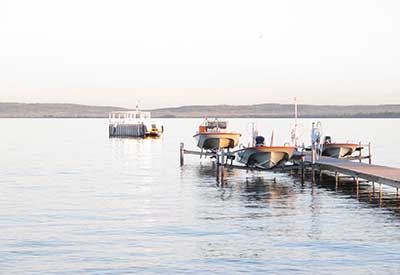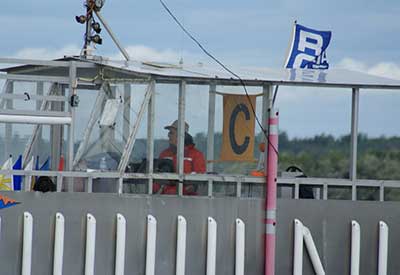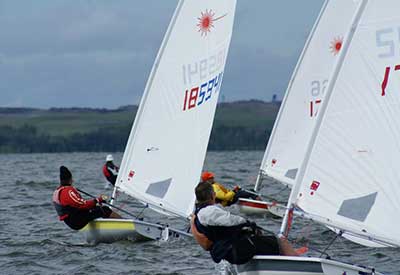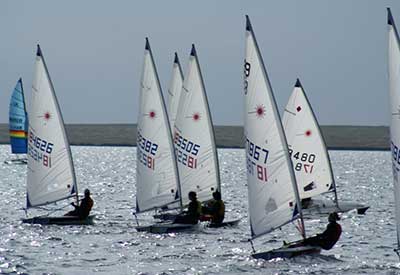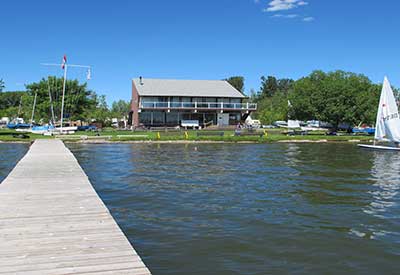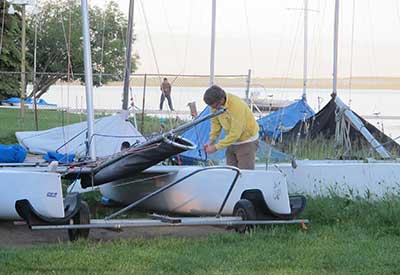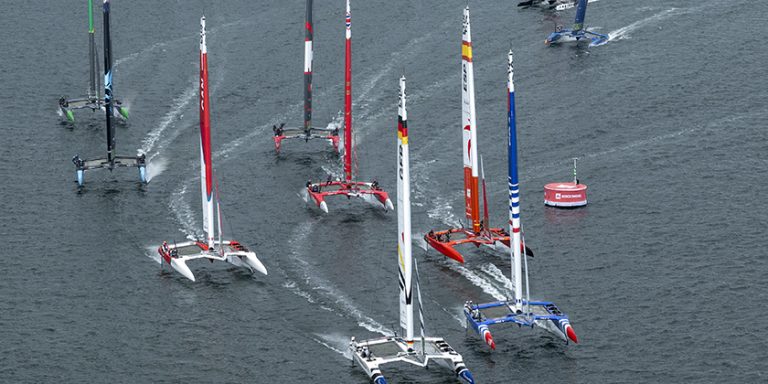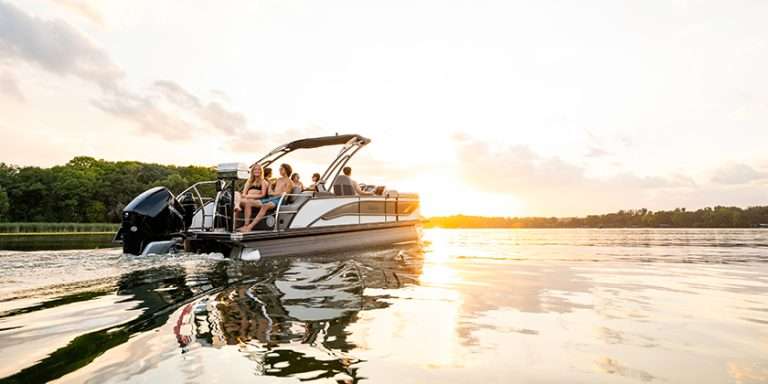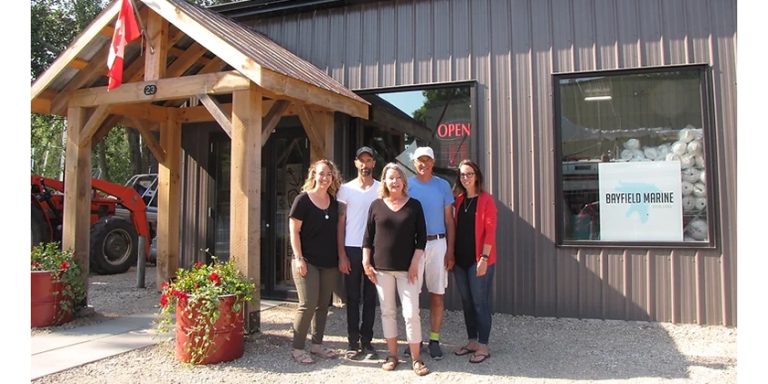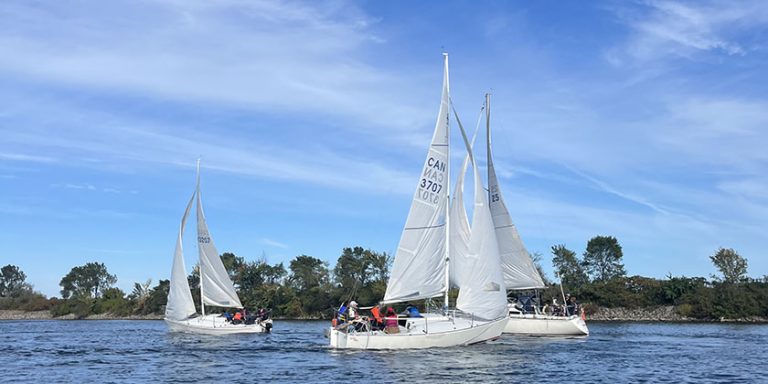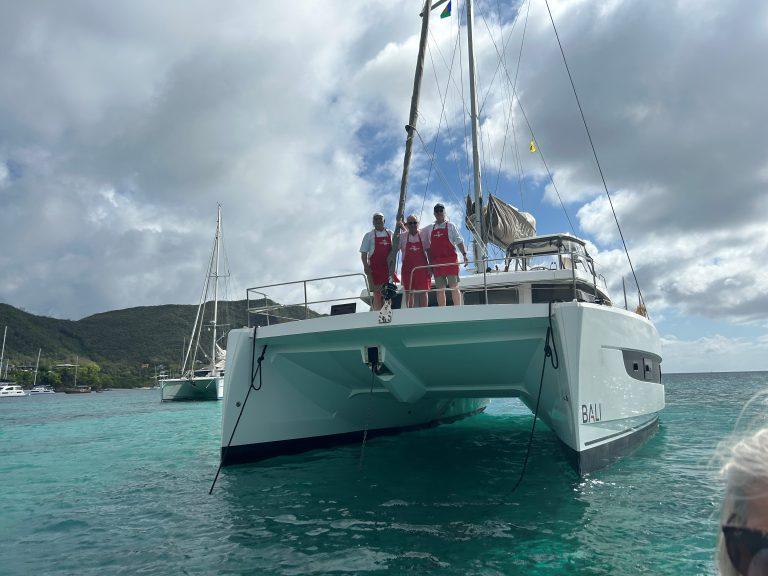Wabamun Sailing Club
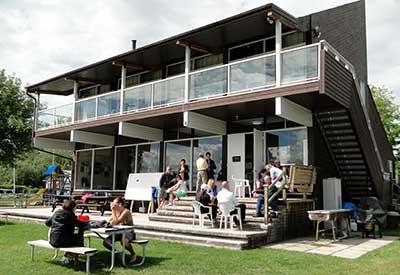
It doesn’t seem to matter if you are on the east coast, in the Prairies, or on the west coast, sailing clubs often seem to be born out of a desire to be on the water with a group of like-minded friends, and if you don’t have a place to hang out, then you use member beaches until you do. Such was the case with Wabamun Sailing Club (WSC) in Northern Alberta.
In 2010, the Rear Commodore, Robert Rose, with the help of archivist Keith Driver, compiled the first 50-year history of Wabamun Sailing Club into a book to share memories and traditions. He explained at the end of the book that, “One of the greatest joys for a parent is to see their children grow up and share their love of sailing as I have.” I am most appreciative that he has shared so many of these stories with us for you to read!
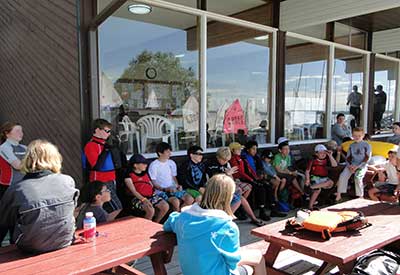
The tiny community of Wabamun (Cree for “looking glass”) was moved from the northwest corner of Moonlight Bay to its present site across the frozen lake during the cold winter of 1912, when it became incorporated. Its survival was dependent upon the presence of the Grand Trunk Railway, which brought cottagers and tourists to the lake. The railway also allowed for the development of a commercial fishing industry (the best whitefish and large northern pike in Alberta) that used railway refrigeration cars with ice cut from the lake. In the 1950s and 1960s, power-generating plants (as well as a mine to provide coal for the plants) were built around the lake.
Wabamun Sailing Club is found just west of this community on the north shore of the lake, approximately 60 km west of Edmonton. As one of the most heavily enjoyed lakes in Alberta, boating activities use just about all of the 82 square kilometres and the (average) 11-metre depth of the lake.
As roads improved in the 1940s, cottagers came together and formed the Kapasiwin Yacht Club in Moonlight Bay with Lightnings, Comets, and International 14s. They were soon followed by the Royal Canadian Naval Sailing Association (RCNSA) in the 1950s with Y-Flyers. Five members of RCNSA decided that they, too, wanted their own club with a new location, as the area was becoming weed infested. So with no land and no money, but lots of enthusiasm and vision, Wabamun Yacht Club was formed on March 18, 1960. This group and a few others formulated a schedule so that each weekend in the summer they would rotate around the lake, having a different family host from their cottage beach. By 1964, the first Thanksgiving regatta and turkey dinner commenced with 18 boats and 85 people at the Sorochan cottage and is still a strong tradition, though now moved to the clubhouse.
The new Fireball sailboat entered the picture and was taken up with great enthusiasm on the lake, but a huge issue ensued with finding crew! So Walt Howard started the club newsletter called the “Mainsheet” and wrote about the problem. “If as a reward for a virtuous life we had our choice of the perfect crew, we would no doubt ask for one with the strength of a gorilla, the agility of a cat and the IQ of Einstein. Since none of us are blameless, the best solution seems to be that offered by an old-time skipper: get a young active woman with strong hands – preferably married and as pretty as possible. The reason, we suppose, for choosing married women is that they understand involved situations and are used to dealing with blockhead males. In choosing a good-looking woman, you naturally get a high IQ, as can be genetically proven.” Some things NEVER change!
Some low-lying marshy land was finally found and purchased through membership debentures in the summer of 1966. After three dump truck loads of gravel, topsoil and seed were added to lay a foundation for the first building, a one-car garage built in one day! Not really what you would call a YACHT club, so the name was changed to the Wabamun Sailing Club.
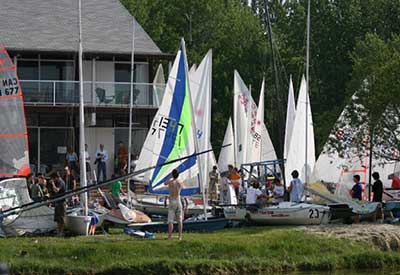
They knew that to have a successful sailing club, they had to get the kids involved. In 1967, the Sorochans hosted a two-week junior sailing course at their cottage for 35 Edmonton Yacht Club and WSC children, which was eventually to become the Northern Alberta Sailing College (NASC). This was very ambitious for at the time there were less than 35 WSC members.
By the late 1960s, the club was close to 60 members with 51 kids in the junior sailing program. As the one-car garage was not big enough to host large gatherings, the commodore invited everyone back to the Cheriton cottage for a beer after a race, setting the stage for future Sailpasts. Realizing that this tradition had to move forward, Ross Cheriton held a tailgate meeting in the club parking lot to approve $17,000 to build a clubhouse. Things moved along quickly with volunteer support; the clubhouse was finished before the 1971 sailing season started. Now they could host big regattas, which started that summer with the Provincial Regatta. Sailweek was so successful that it became and still is a permanent part of the club’s sailing program. However, the increased number of regattas meant that they needed a reliable race-starting barge. With $95 raised through bottle drives, some 45-gallon drums were welded into two pontoons and the barge was started. The decking was completed on one no-wind day and with the addition of an outboard, they had a proper race management structure.
Now the challenge was to accommodate those members who did not own cottages for this week-long event. So the trailer park campground was developed with 10 spots. Now that they had power in the clubhouse, and in the campground, there was also power for power tools! (And my friend, is there nothing sweeter than drilling holes in boats – for sure?)
They had a clubhouse and a boathouse so what was needed next…a burgee, of course. Ross Cheriton got in the act again and his design was chosen with a wavy “W” for waves which separated orange on top for the setting sun, and blue on the bottom for the lake’s waters. Now that things were becoming official, with a Sailpast and burgee, protocol had to be put in place to display a proper salute to the commodore and his lady. “The dress code prohibited the wearing of trapeze harnesses at the reception. If a sailor should capsize during the Sailpast, he was still required to climb onto the overturned hull, stand and salute.” They didn’t, however, stipulate that the commodore and his lady could NOT be thrown off the pier, which is exactly what happened!
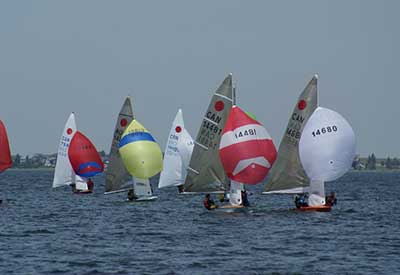
The 1970s saw a huge growth in membership, a waiting list, a new front deck, rubber tires to bolster the problem of shoreline erosion, more gravel fill, planting of laurel leaf trees, additional trailer park spots, development of the Fireball fleet, and the start of the clubhouse washroom project. The first Commodore’s Award Night and Banquet with a dress code that required suits (specifically spelled out – NO wet suits) and long dresses was held in 1977.
In 1983, they hosted the CYA Women’s Single- and Double-Handed Nationals. I remember heading off on a plane to Edmonton with my sail, centreboard, rudder, tiller, and bug spray (apparently the secret weapon of choice). What I remember more than the mosquitos was that we were all greeted warmly, taken in, housed, and fed like family. They have also fostered great Race Management personnel with the “A Team” of Peter and Jordyce van Muyden, and the Langer family (Gordon, Chris, Doug, and Adam) and Olympians Marc Peers and Roy Janse.
Although hosting local, regional, provincial, national, and continental events is their hallmark, they have never forgotten their roots. There are members who are children of the first generation of members, and grandchildren of first and second generation members who partake in Sailweek and NASC lessons. However, their biggest challenge came on August 3, 2005 when a CN freight train derailed spilling 1.3 million litres of fuel oil into the lake. Volunteers began placing booms to protect the shoreline, but it wasn’t enough. In two weeks, they were to host the Youth National Sailing Champs. They not only pulled it off, by moving the entire event to the Calgary Yacht Club, they managed to win the CYA Regatta of the Year Award.
What a vibrant, remarkable, committed group of boaters, who for the first time in many years have a problem of lack of boat stalls for members. What a healthy problem to have! wabamunsailingclub.ab.ca
PHOTOS:
Photo 1: Playground and active participation in front of the clubhouse.
Photo 2: Youth Competitors listen to a briefing.
Photo 3: Preparing on the lawn for a Laser regatta.
Photo 4: Fireballs coming downwind.
BELOW:
The long dock to accommodate lower water levels; Famous RC Pontoon Boat; Laser Master Canadian Championships; Radials going upwind at annual sailfest; Long dock; Toronado boat park.
